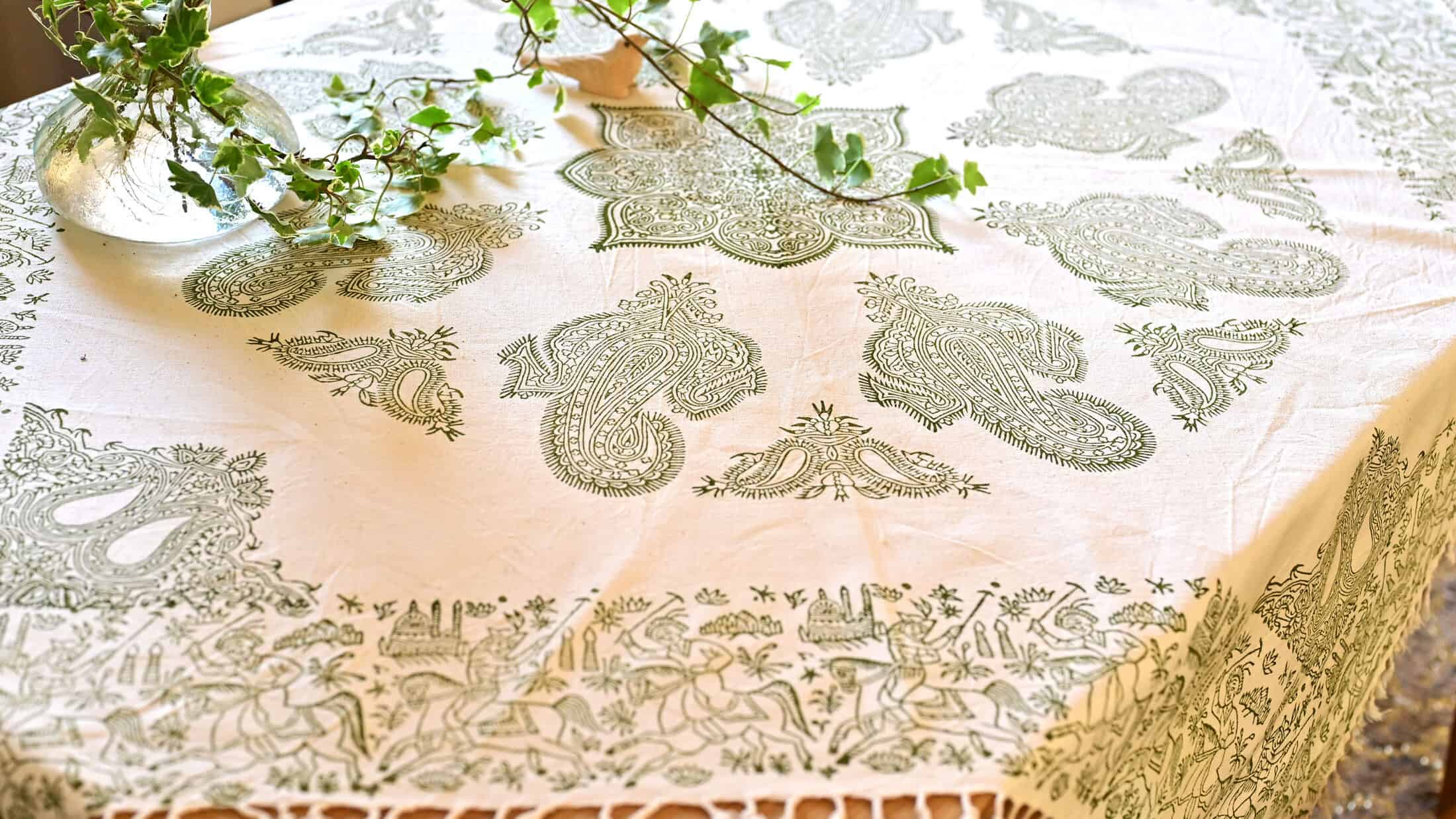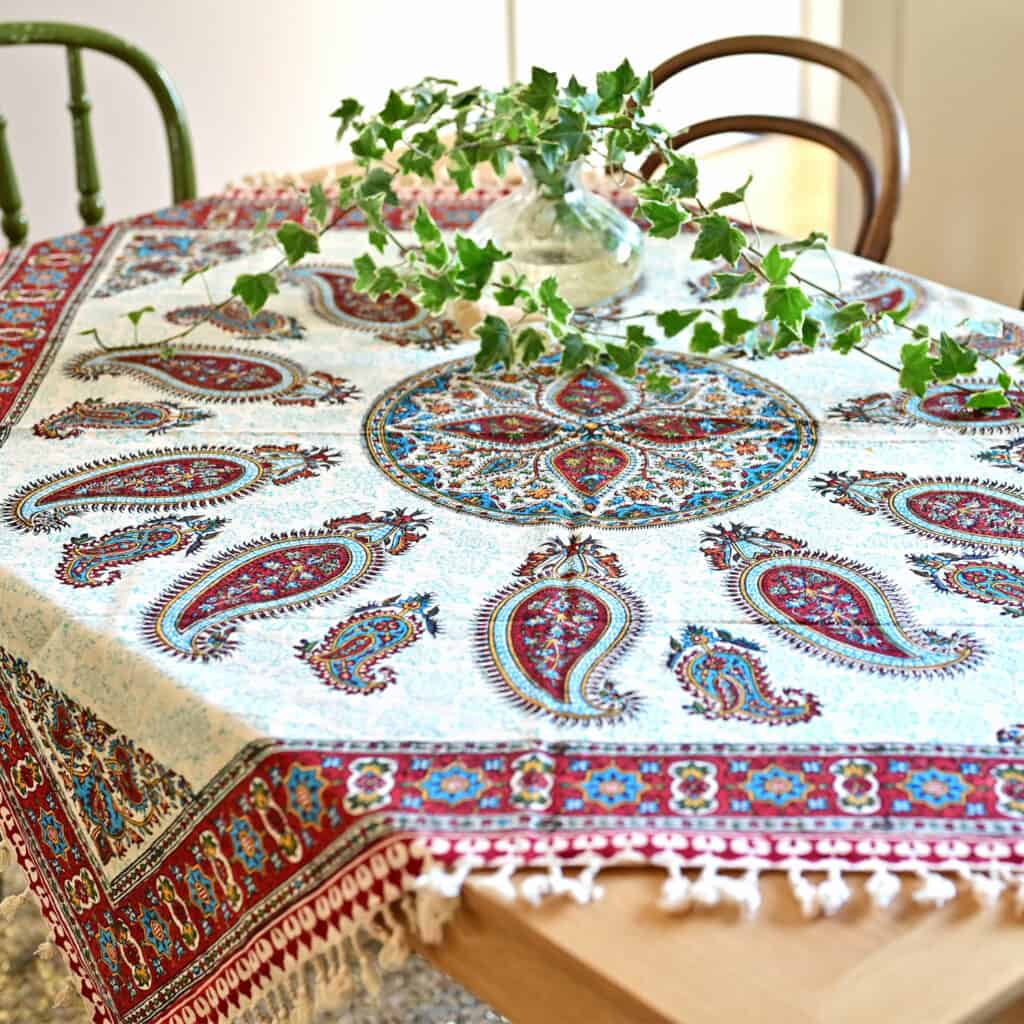
Ghalamkar Textile Art
Ghalamkar, or Qalamkar, is a traditional Persian textile art form that involves hand-printing intricate patterns on fabric using wooden blocks. The word “Ghalamkar” translates to “pen-work” or “drawing with a pen” in Persian. It is a combination of two words: “Ghalam” meaning pen and “kar” meaning work.
The process of creating Ghalamkar involves several steps. First, a design is drawn on paper or cloth using a pen or brush. The design is then transferred onto a wooden block by skilled craftsmen. These wooden blocks have carved patterns on their surface, representing the desired design. Each block is meticulously carved to create intricate motifs and patterns.
Next, the fabric, usually cotton or silk, is prepared for printing. It is washed, bleached, and dried to ensure it is free of impurities. The wooden blocks are dipped in natural dyes made from plants, flowers, and minerals, and then pressed onto the fabric repetitively. The craftsmen carefully align the blocks to create a continuous pattern across the fabric.
After printing, the fabric is washed to remove any excess dye and to fix the colours. This process helps to make the colours vibrant and durable. Ghalamkar fabrics often feature rich colours such as blues, reds, greens, and yellows, and they showcase intricate floral, paisley, and geometric patterns.
Traditionally, Ghalamkar textiles were used to make garments, including dresses, skirts, headscarves, and home decor items such as tablecloths, bedspreads, and curtains. They were highly valued for their beauty and craftsmanship.
Today, Ghalamkar textiles are still produced in some areas of Iran, particularly in Isfahan and Yazd. They continue to be appreciated for their cultural significance and unique artistic qualities. Ghalamkar fabrics are sought after by collectors, fashion designers, and those who enjoy traditional Persian art and craft.


